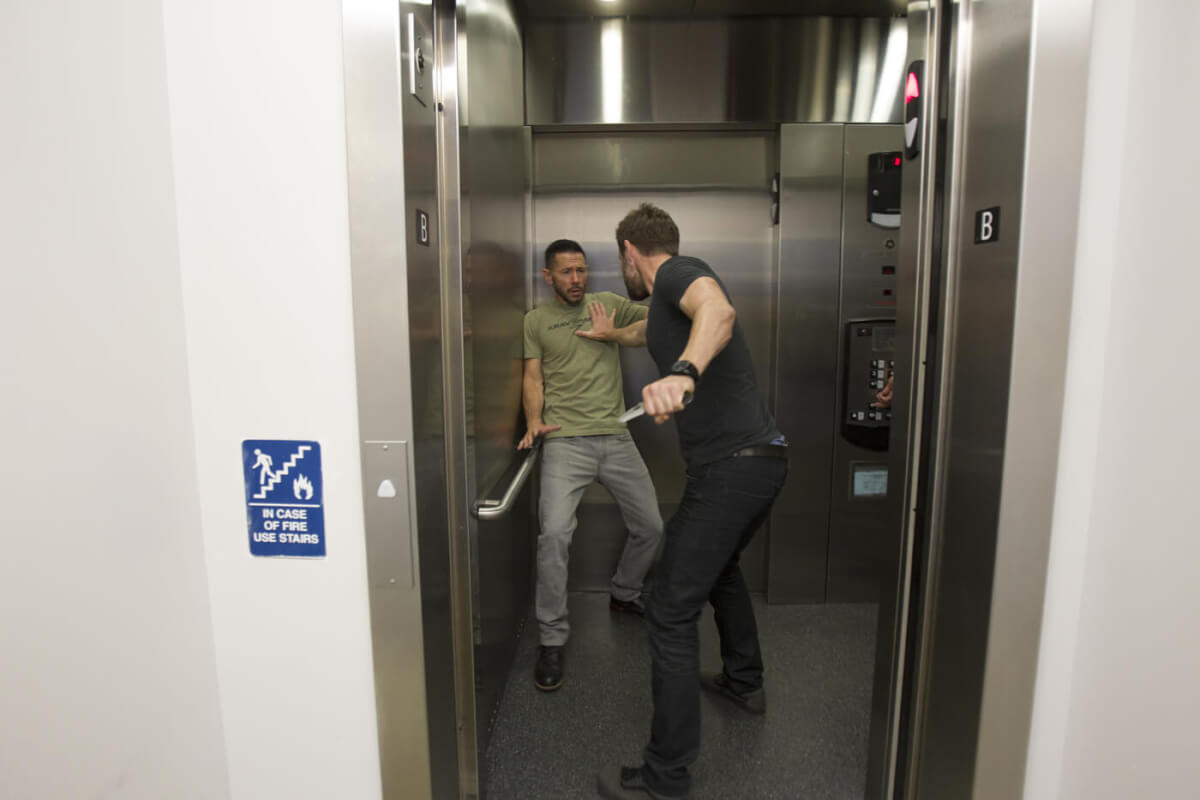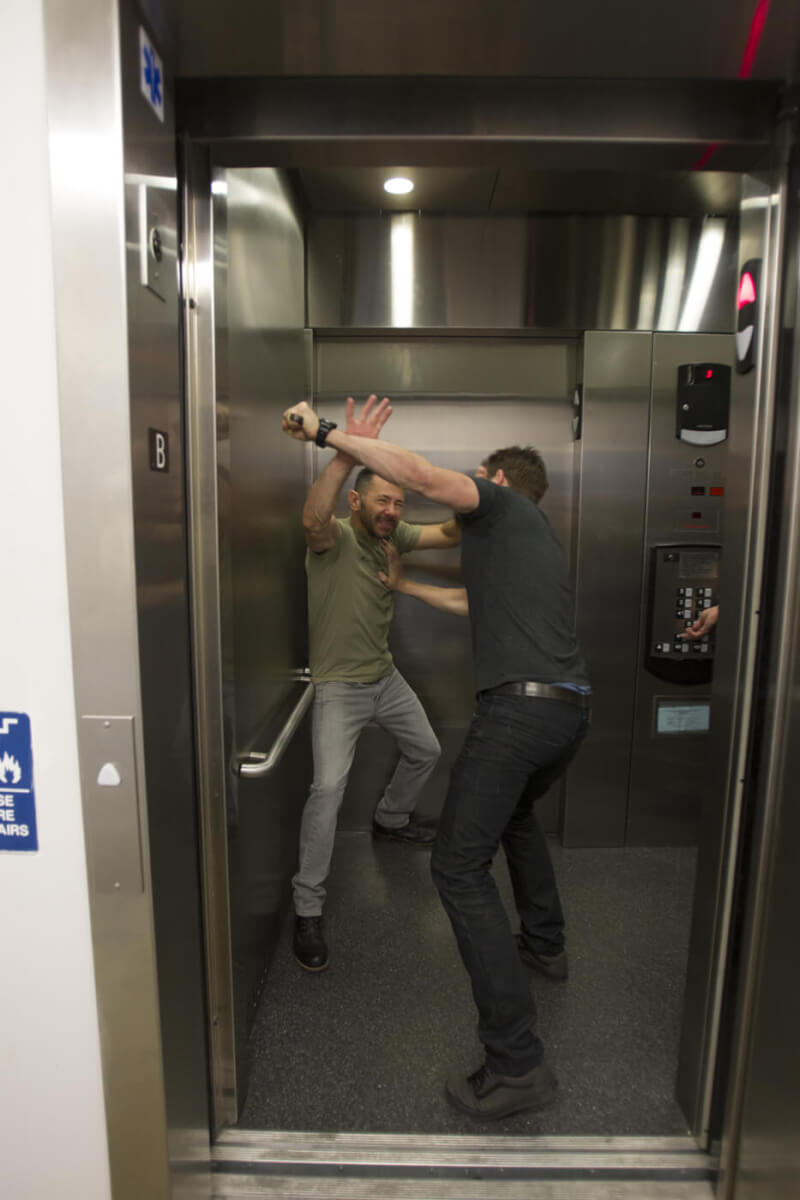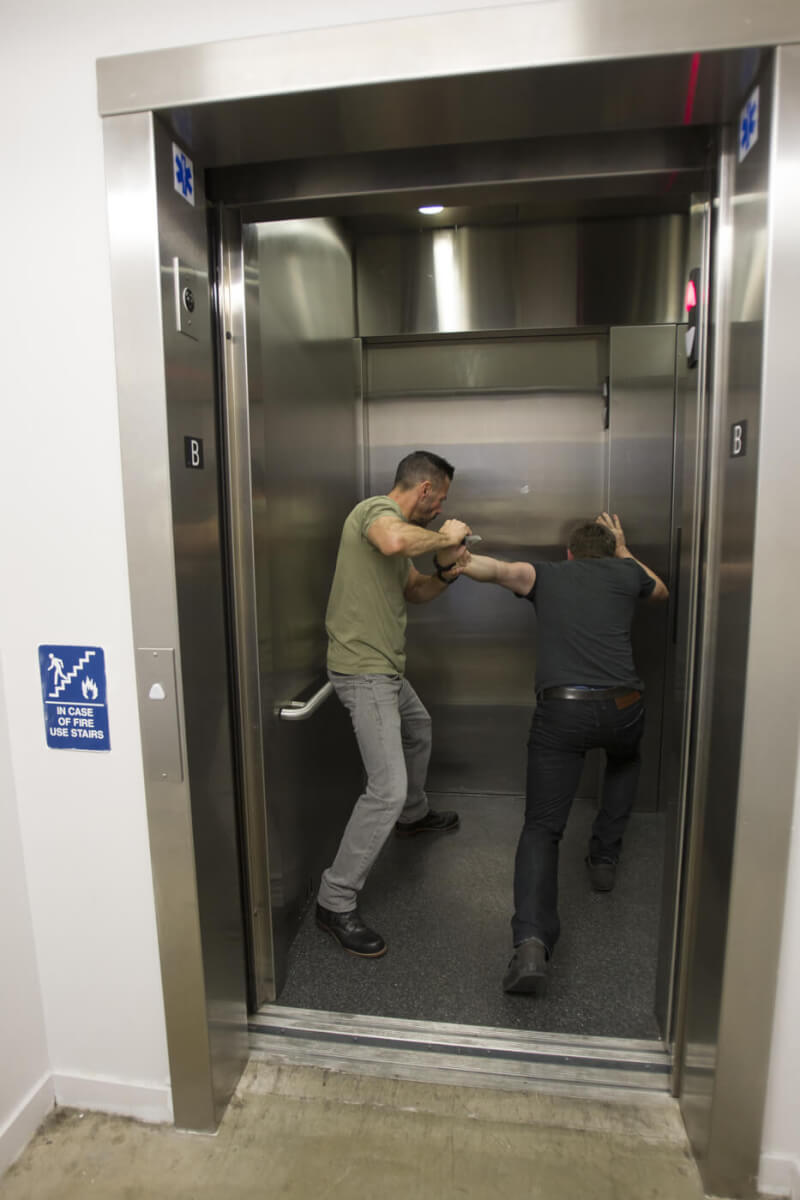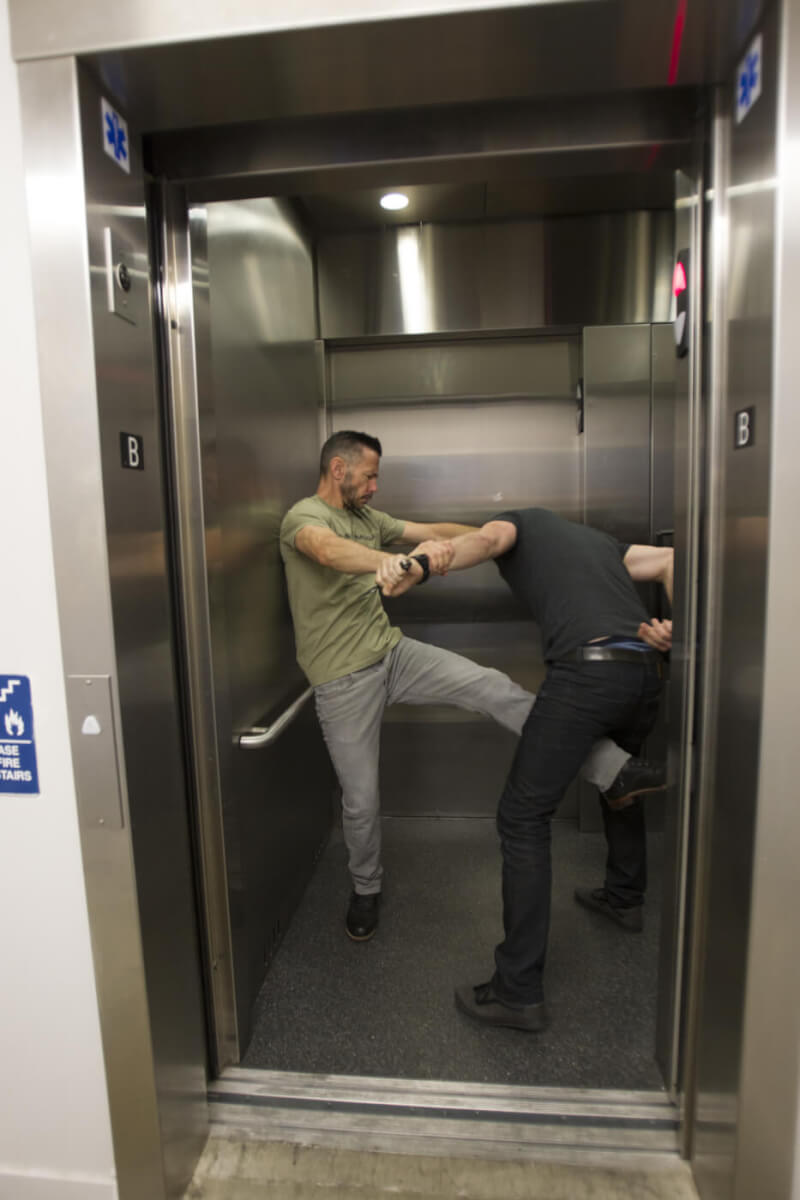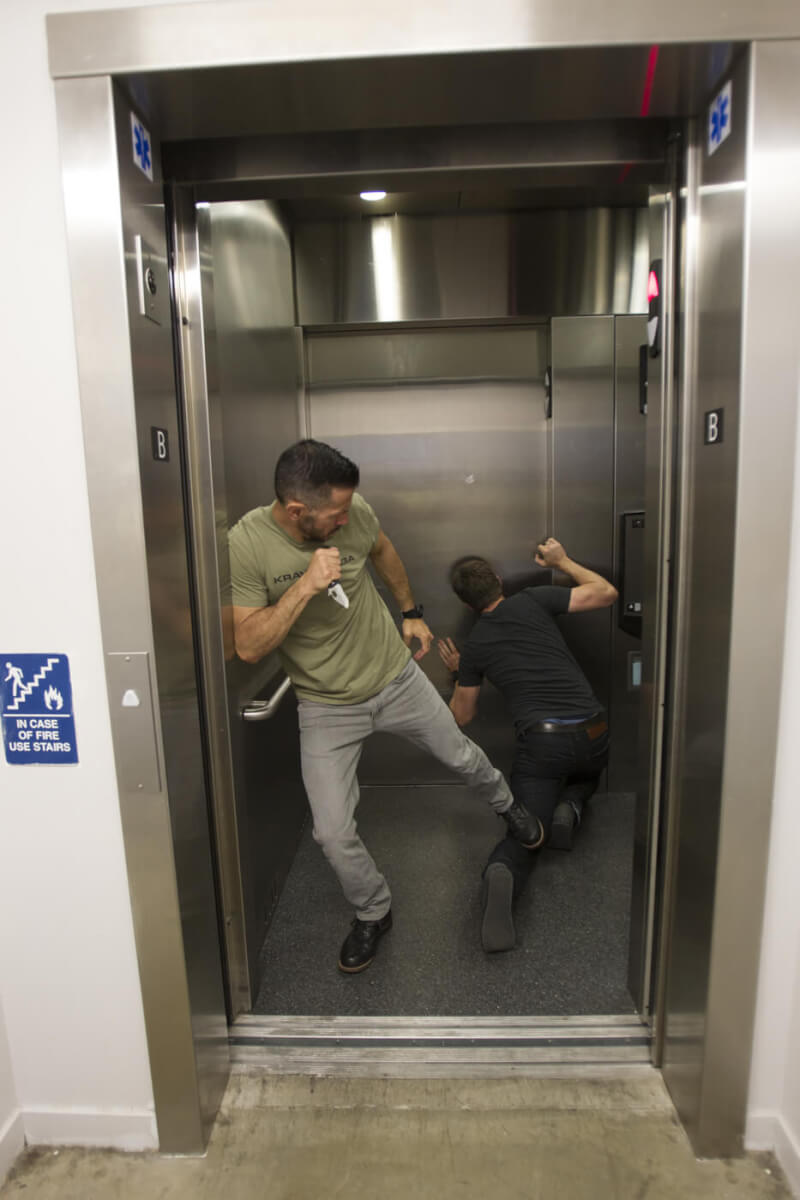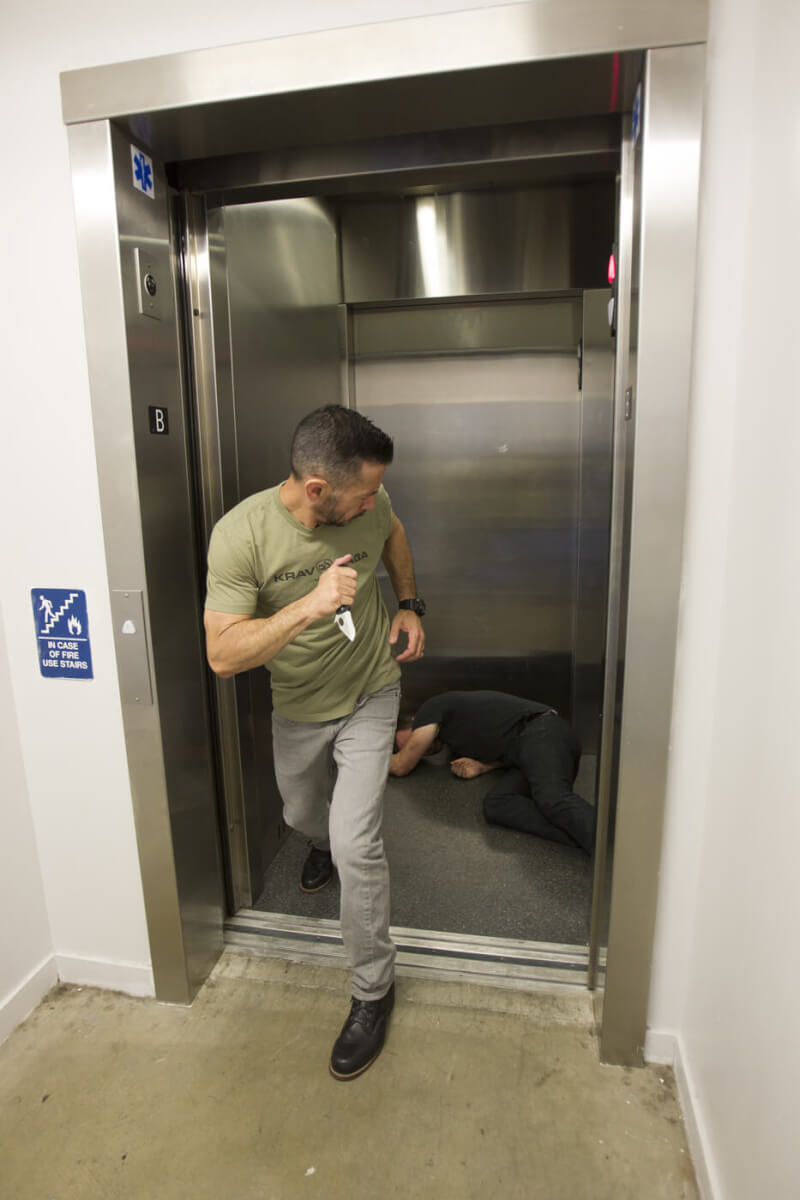Unprovoked attacks can occur nearly anywhere—in your home, on the street, or at your place of business. Successfully thwarting an assailant’s attack is no small feat, especially if it comes as a complete surprise.
Imagine you are trapped within a small, confined structure such as an elevator with the same attacker, in a dance club with a crowd of people, or on a tiny stair landing. These scenarios magnify the severity of the initial situation tenfold.
Being trapped in a confined area with someone intent on aggressively harming you seems like a lose-lose situation for you … but that doesn’t have to be the case. In fact, knowing what to do—or, more importantly—what not to do when a close-quarters conflict erupts will not only give you an edge on prevention, the tight confines of your surroundings might also enable you to take down your attacker when a full-scale fight ensues.
Defense Begins With Awareness
First and foremost, the best possible way to prevent an unprovoked attack in a confined area is to avoid the situation altogether. This boils down to you being well aware of your surroundings at all times. Many confrontations simply would not occur if your pursuer had an indication you “were on to him,” and his element of surprise would be disrupted.
To accomplish this, you have to always walk with your head high, exuding confidence, as you scan the area for anything out of the ordinary. In addition, don’t continuously look down at your cell phone or other electronic devices. These can distract you greatly, thereby granting someone the ease of following you down the street and eventually up to your front door, car parking space, or into an empty elevator. Predators prey on distracted, confused, or preoccupied people. Don’t be one of these targets, and you will greatly reduce your probability of being attacked.
Being aware of your surroundings also applies to confined indoor areas, such as dance clubs, restrooms, and small hallways or any area that limits your mobility while being surrounded by a large number of people. Always notice who is around you, who stays close to you, and who constantly watches your every move. They could be waiting for the right moment to strike. Don’t give them that moment. Make it clear you are also watching them; and when they realize you won’t be an easy victim, they will move on to another target.
Use Your Surroundings to Your Advantage
One thing to keep in mind when or if you are attacked in a confined area is that the enclosed space or obstacles in your path can be a great advantage to you and not a hindering handicap. For example, being pinned against a wall by an assailant may seem like a no-win situation, but in reality, you actually have the upper hand.
First, your attacker will have one hand, if not both, occupied pressing you against the wall; you have both hands free, enabling you to strike his vital areas—including his eyes, nose, throat, and ears.
Second, with very slight movements, you can shift your body to one side or the other, utilizing your attacker’s forward energy to essentially slam himself into the same wall you previously occupied. Remember also that you have both legs free to strike the lower portion of his body, including his groin, knees, and the sensitive nerves (sciatic, for example) that run along his legs. With his arms unintentionally supporting you, your balance while performing these strikes will be easy to maintain and allow you a full range of self-defense techniques.
One big mistake you must avoid is trying to use brute force to push your attacker back in order to release yourself from the wall. In most cases, it is a futile attempt, especially because your assailant has leverage—and you simply do not. You will not only use up nearly all your energy, but by struggling, you will also cause your attacker to become more aggressive. Clearly, this will cause a bad situation to get much worse.
The use of obstacles to slow down your attacker can be beneficial to keep him at bay until help arrives or until you can escape from the enclosed space. Trash cans, chairs, small tables, or other everyday objects can be used either to create a barrier or as blunt striking instruments. A continuous barrage of these items will wear down your attacker and give you the needed time to make follow-up moves or escape to safety.
Use the Proper Techniques
Self-defense or martial arts training are great ways to handle an unprovoked attack in a confined area. But be warned: Not all techniques taught in the dojo (training hall) or at the gym will apply to a close-quarters fight. You must be able to differentiate between techniques performed in class and those that apply to “real-life” self-defense.
There are many simple things you can do to lessen your chances of becoming a victim while in a confined location. Most are common sense; yet, most people are guilty of ignoring these. As a result, they become statistics for their local law enforcement office.
Pay attention to your surrounding area—not your cell phone. Cell phones have become a convenience—and a curse. Constant viewing, texting and browsing takes your attention off your immediate area, giving your watchful predator means to surprise and take you out.
Unplug the headphones. As with cell phones, a great number of people are listening to music or calls through headphones. This hampers your sense of hearing so greatly that an assailant could be standing right behind you and you wouldn’t know it. Turn your headphones off until you are in a more familiar and safe location.
Ease up on the alcohol. In a crowded dance club, the excess intake of alcohol can impede your mental sharpness. A predator could be standing behind you the whole night, watching you lose sobriety until you become easy pickings to his attack.
Travel with a friend. If you intend to be somewhere unfamiliar and crowded with strangers, invite a friend to join you. Two sets of eyes are better than one to keep a lookout for people acting strange or eyeing you suspiciously. Additionally, an attacker is less likely to target you if you have a companion nearby.
Formulate an exit plan. In a crowded area, staying in the proper location can reduce your chances of being targeted. Stay away from back corners or hidden stairways. These are easy places for abductions. Instead, remain near the entrance and scan the room for other exits, including back doors or easy-to-reach windows.
Go or stay? Use your best judgment. Sometimes, it’s best to cancel your initial plans if something just “feels” wrong to you. Trust your body’s natural instincts. If you sense that an area or a crowded location might have some unexpected trouble, listen to yourself and just turn around and go home! Clichéd, but true … better safe than sorry.
Editor’s notes:
A special thanks goes to Jarret Waldman at Krav Maga Unyted in Los Angeles for providing the expertise during the photoshoot.
A version of this article first appeared in the December 2015 print issue of American Survival Guide.


